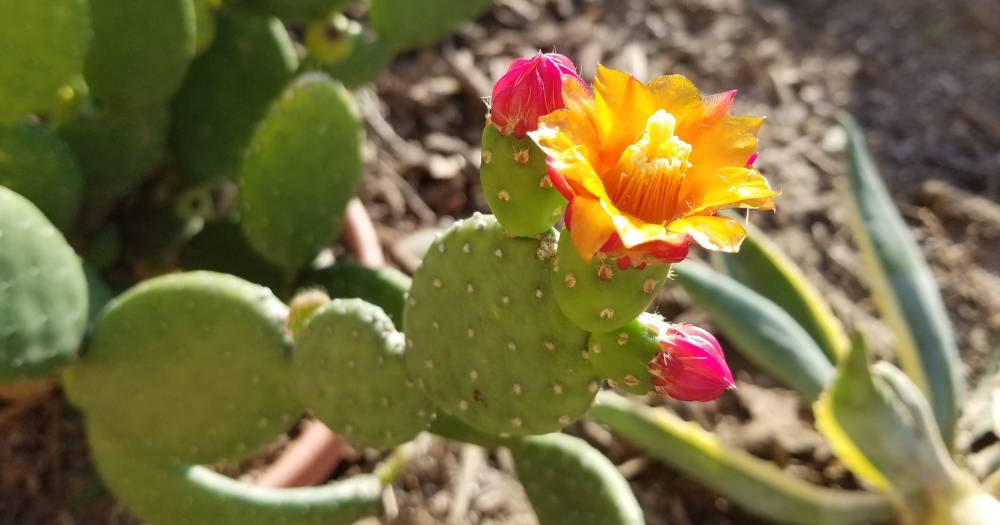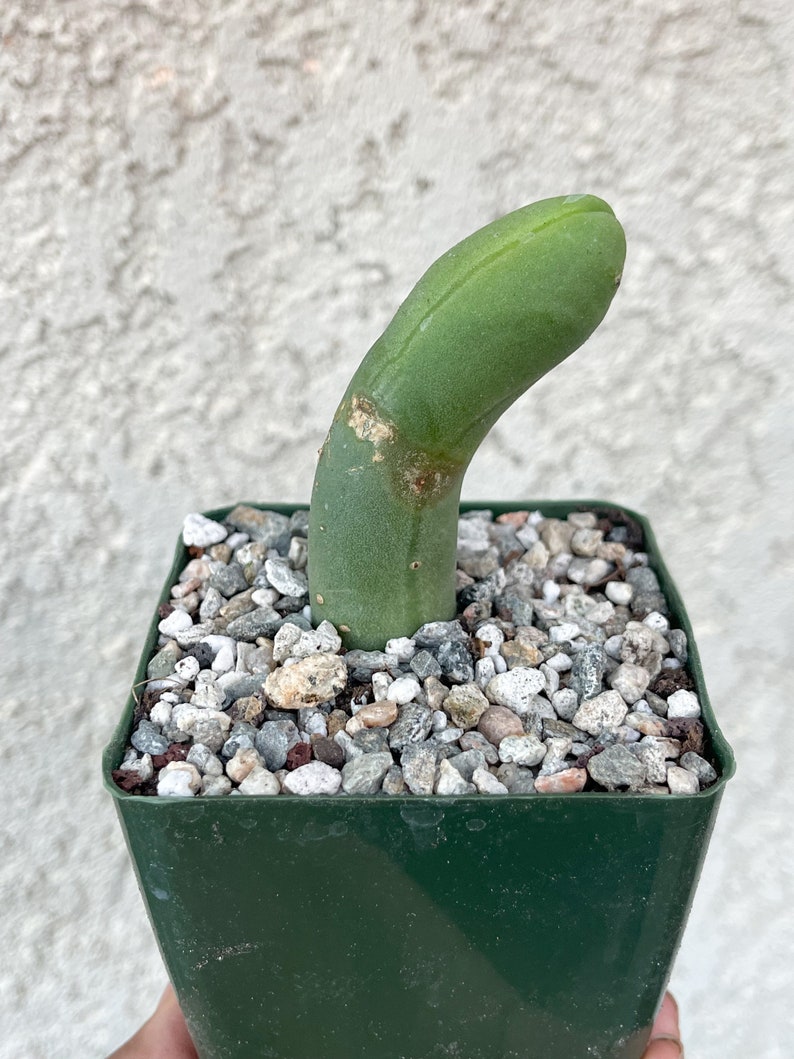Leaning cacti can be a sign of underlying issues that need to be addressed promptly to ensure the health of your plant. Cacti are popular succulents that bring a touch of wildlife and desert-inspired feeling to any living space. Despite being low maintenance, they can still face problems such as root rot, overwatering, and pest infestation. Keep reading and explore the most common reasons why a cactus cannot stand upright anymore and how to fix them.
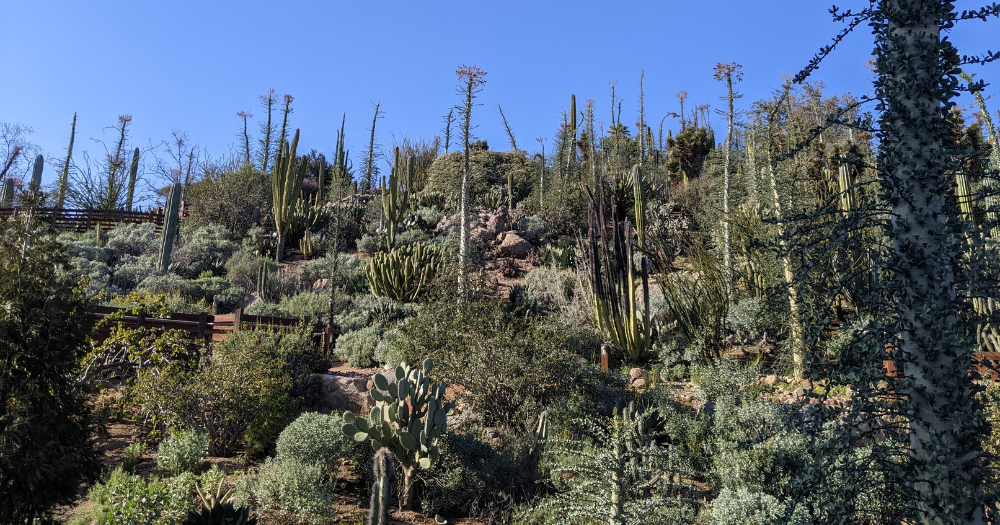
Dig in!
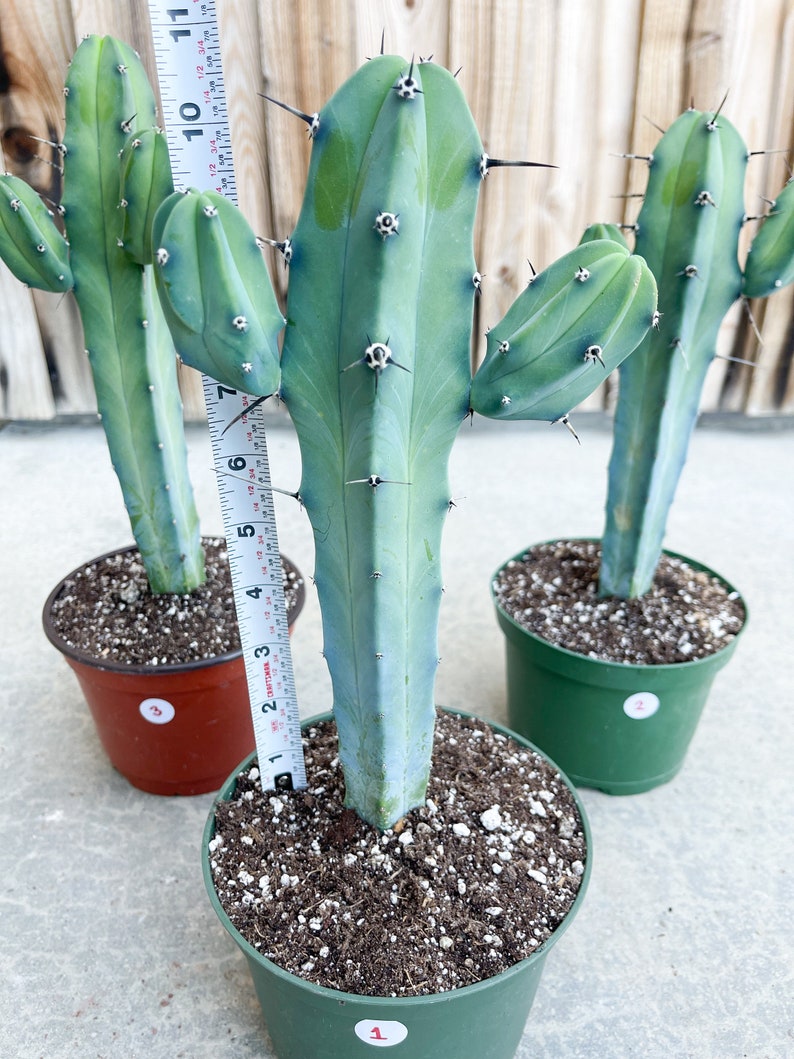
Source: Etsy
Common Causes of Cactus Leaning
Environmental Pressures
Strong winds, heavy rains, or an uneven surface can cause a cactus to gradually lean in one direction as it struggles to stay upright. Exposure to extreme weather conditions puts stress on the plant, damaging its ability to gain proper support from roots and stems.
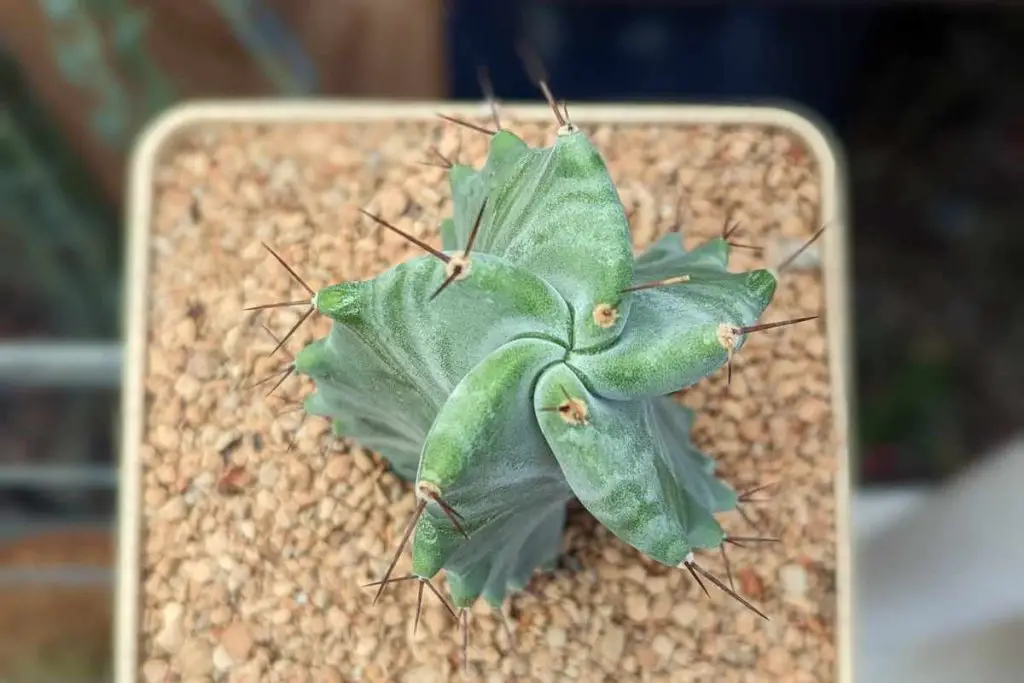
Solution: Bringing potted cacti indoors or covering them during harsh weather is the best way to prevent environmental leaning.
You might also like: The ONE Simple Thing Succulents Need to Thrive and 5 Reasons Why Wind is It
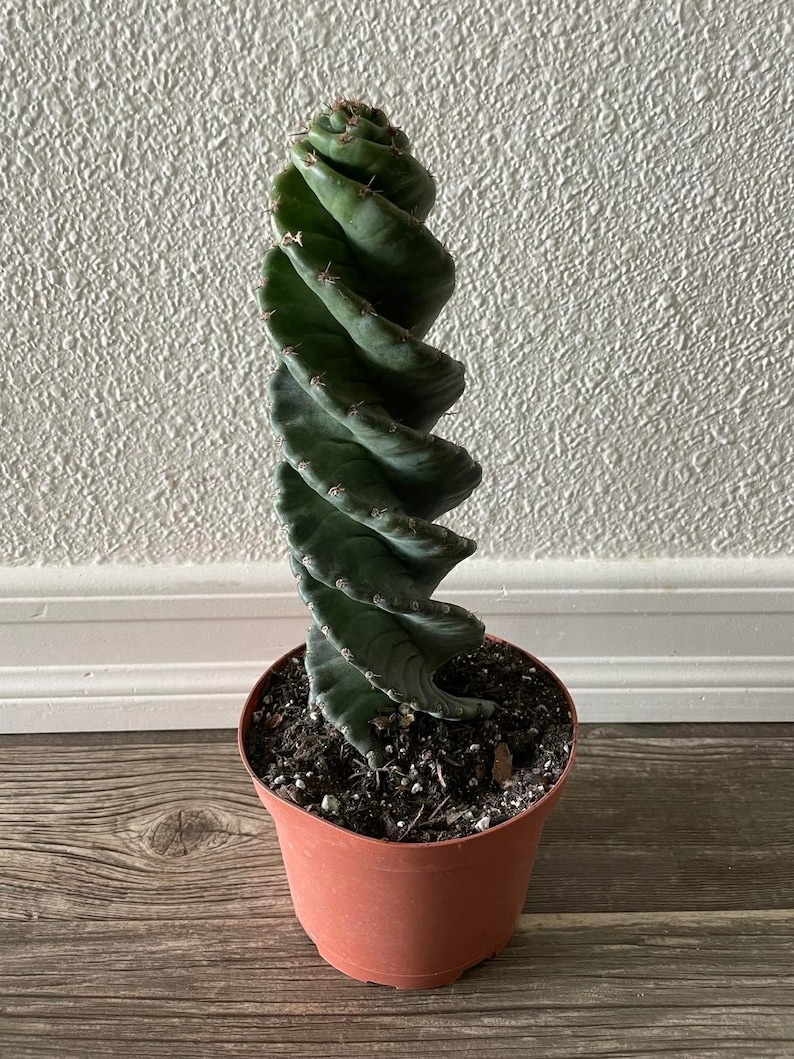
Source: Etsy
Watering Errors
Both overwatering and underwatering a cactus can lead to leaning. Overwatering damages roots, preventing them from taking up water and nutrients effectively and sustaining the weight of the plant.
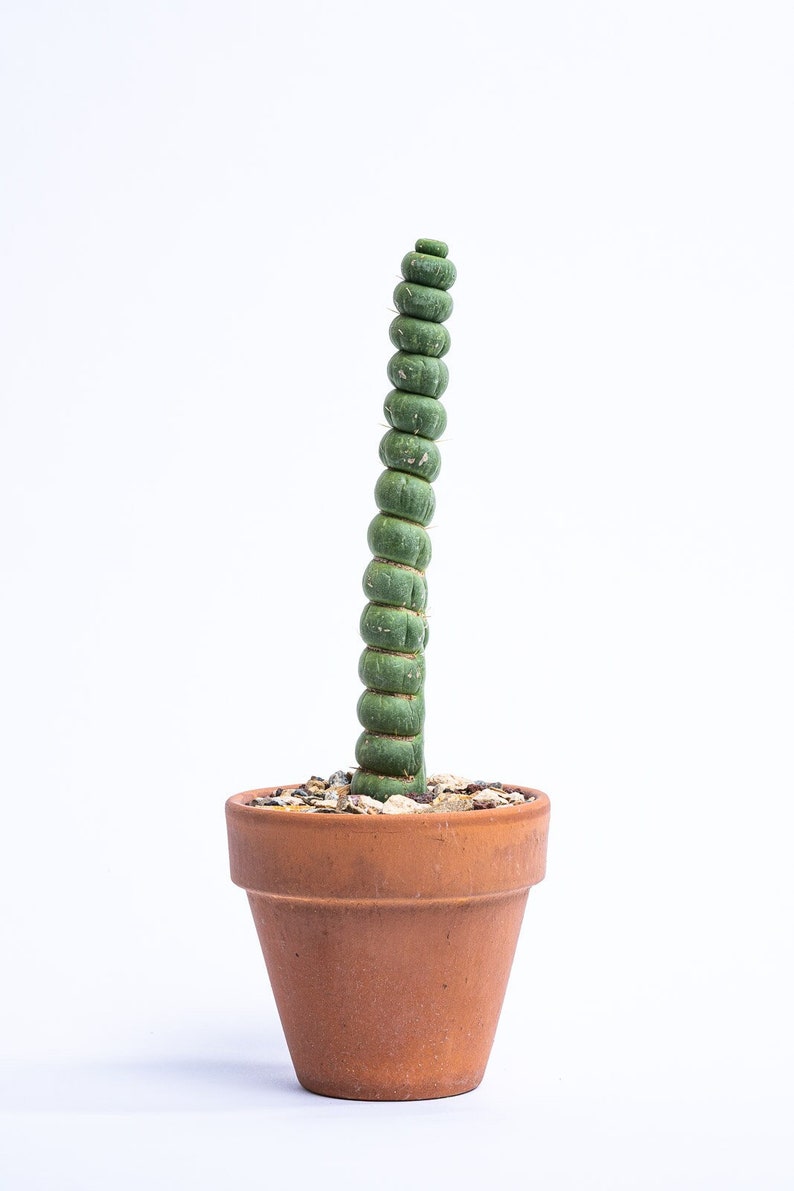
Source: Etsy
Underwatering deprives the cactus of moisture it needs for healthy growth, causing it to become dehydrated and weak.
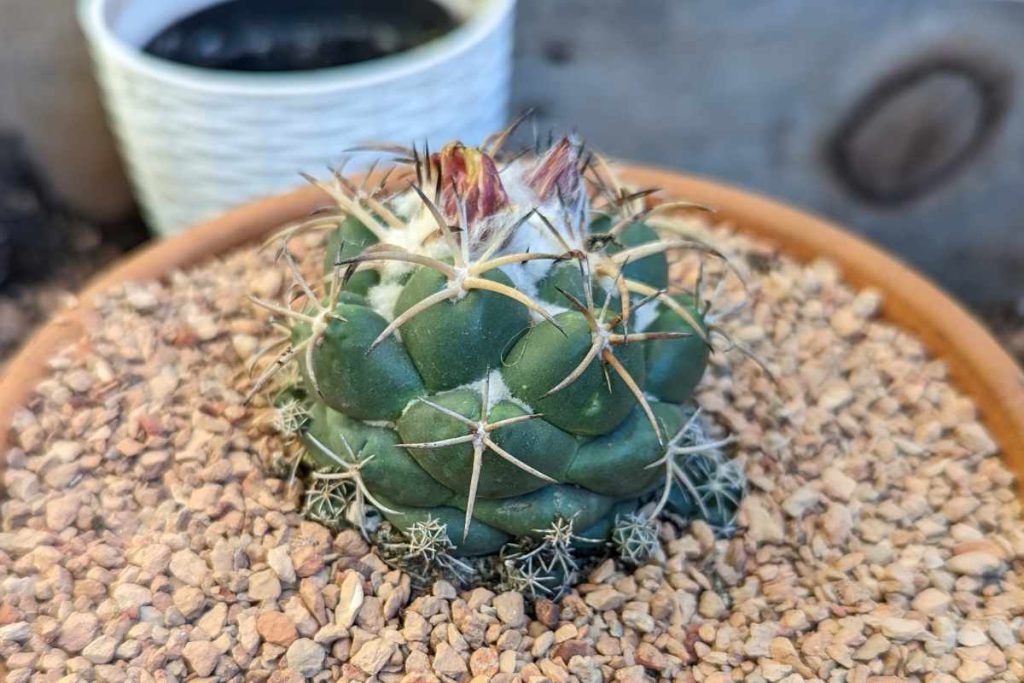
Solution: Only water cacti when the top few inches of soil are dry to keep them from bending over. Allowing soil to dry out completely between waterings prevents root rotting and ensures proper absorption of water.
You might also like: How & When to Water Succulents So They Don’t Die (2023 Update)
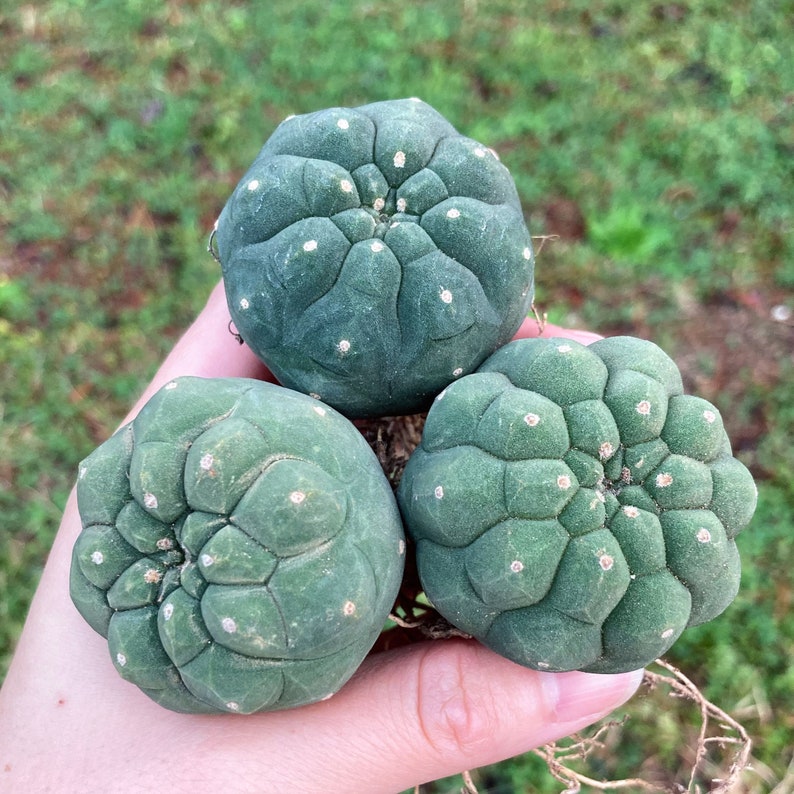
Source: Etsy
Root or Stem Rot
Excess moisture creates the ideal environment for pests, fungus, and pathogens that feed on cactus roots and stems. Rotting roots lose their ability to anchor the plant, while rot along the stem creates weak points that lead the cactus to bend or lean towards one side.

Source: Etsy
Eventually, the rot will become so severe that it travels up into the cactus and causes it to completely fall or liquefy. Overwatering in general just causes so many cactus issues. Always err on the side of underwatering.
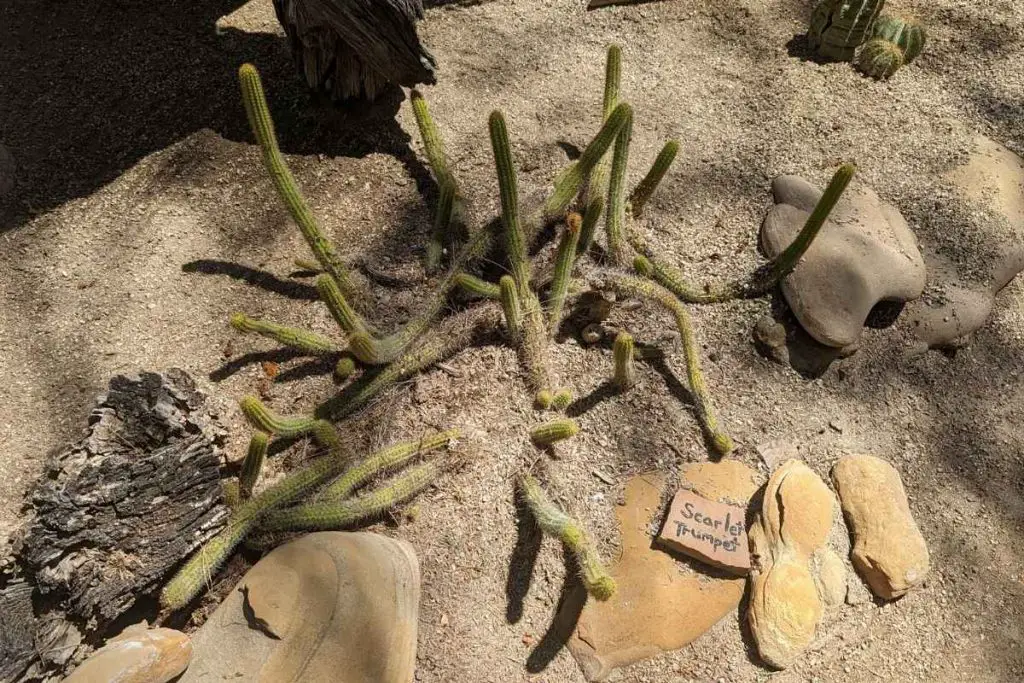
Solution: Ensure that your cactus is in a pot with a drainage hole at the bottom and the soil can drain freely so water doesn’t get trapped in the pot.
You might also like: Root Rot in Succulents: How to Identify and Treat the Problem
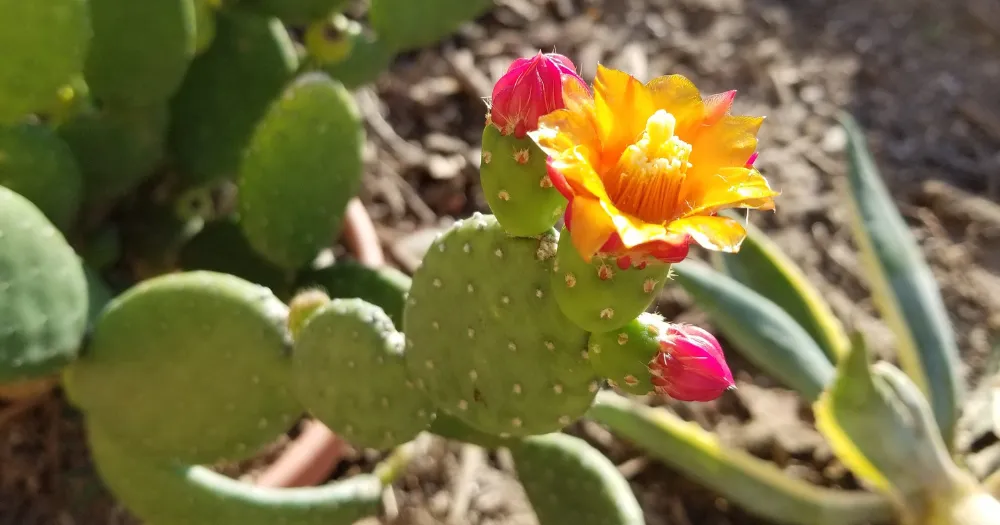
Potting Issues
An incorrect pot size, improper soil type, or soil level that is too low or too high can put physical stress on a cactus.
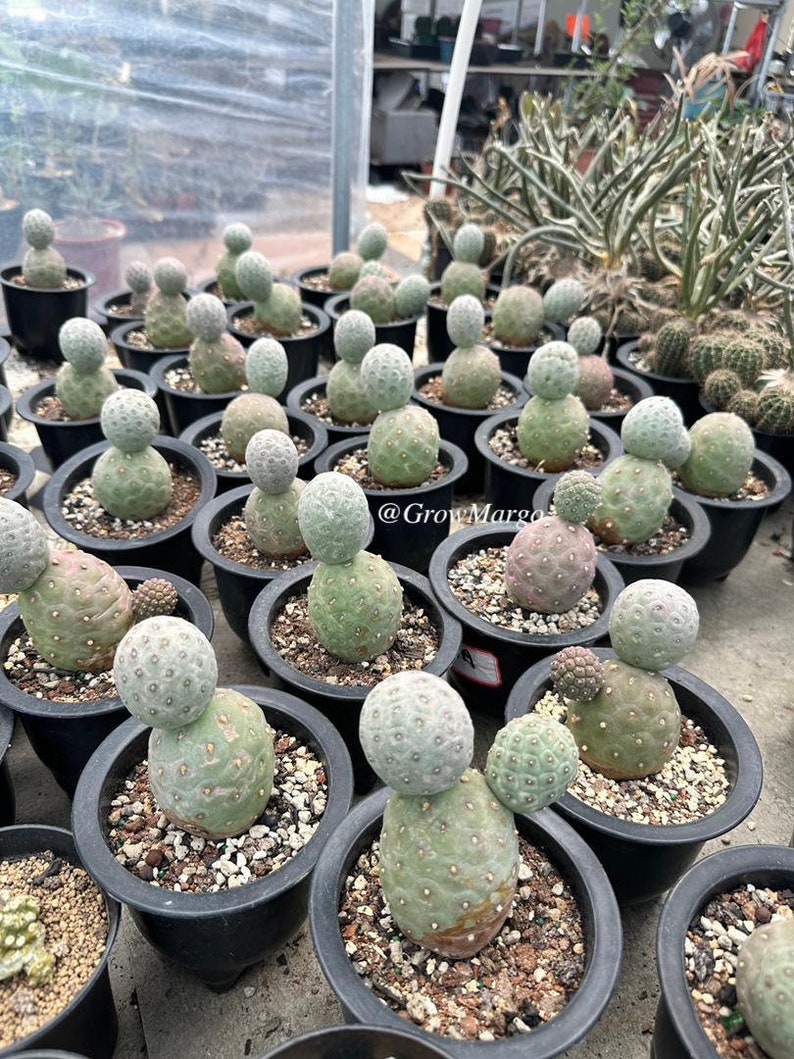
Source: Etsy
Using a pot that is too large allows for excess moisture accumulation, while a pot that is too small restricts root growth. Cactus potting mix, with its limited ability to retain water, must be used rather than regular potting soil to avoid leaning caused by roots drowning or drying out.
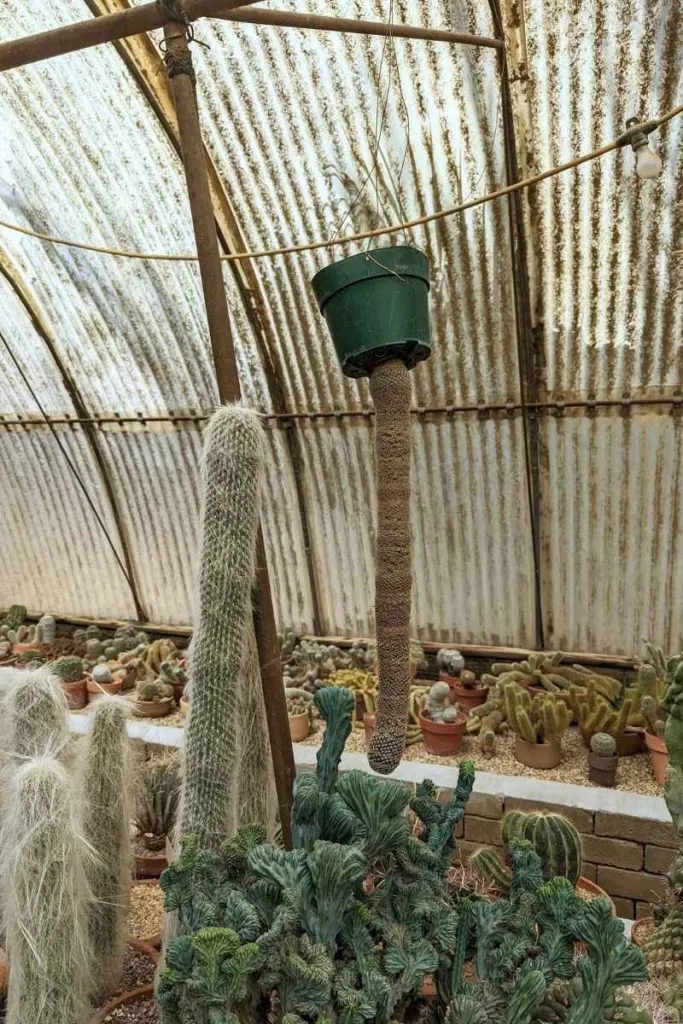
Solution: Keep the pot at the same level and never leave a pot sitting in water to allow for optimal conditions. Only increase pot size incrementally, about one size larger every 2-3 years as your cactus continues to grow.
You might also like: Repotting Succulents: The Best Time to Repot Your Plants and 3 Ways to Tell When It’s Time

Source: Etsy
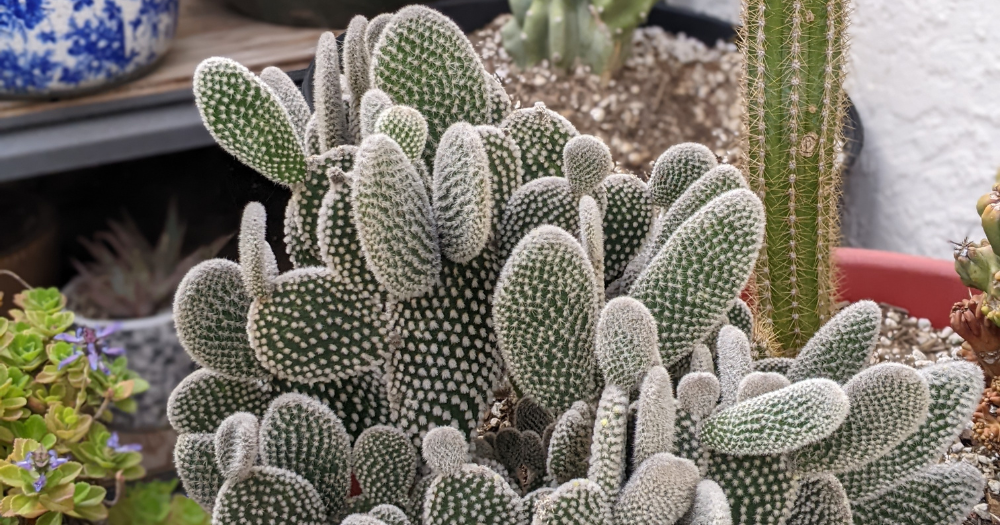
Lighting Conditions
Lack of bright light exposure causes a cactus to stretch towards available light, developing an imbalanced and leaning shape.
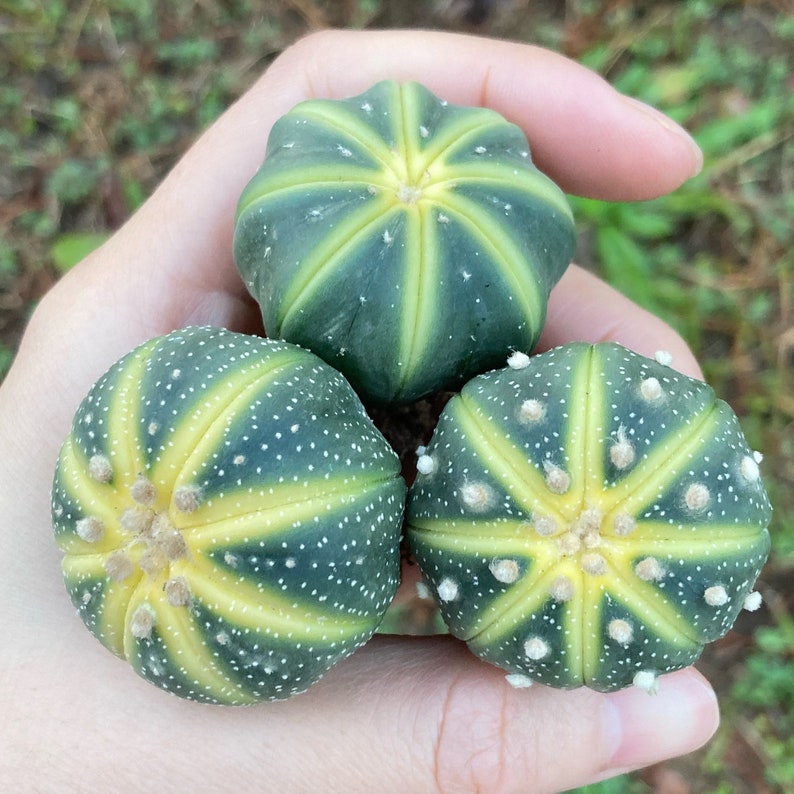
Source: Etsy
Most cacti require plenty of bright, indirect light from a sunny window or proximity to a sunny window. Supplemental grow lights provide essential light for some species or during limited sun seasons.
Solution: Rotating and adjusting your cactus’s position regularly helps ensure even light exposure and straight growth. Dim lighting should be increased or the cactus relocated to an area with more brightness.
You might also like: How Much Light Do Succulents Need? A Comprehensive Guide in 12 Parts
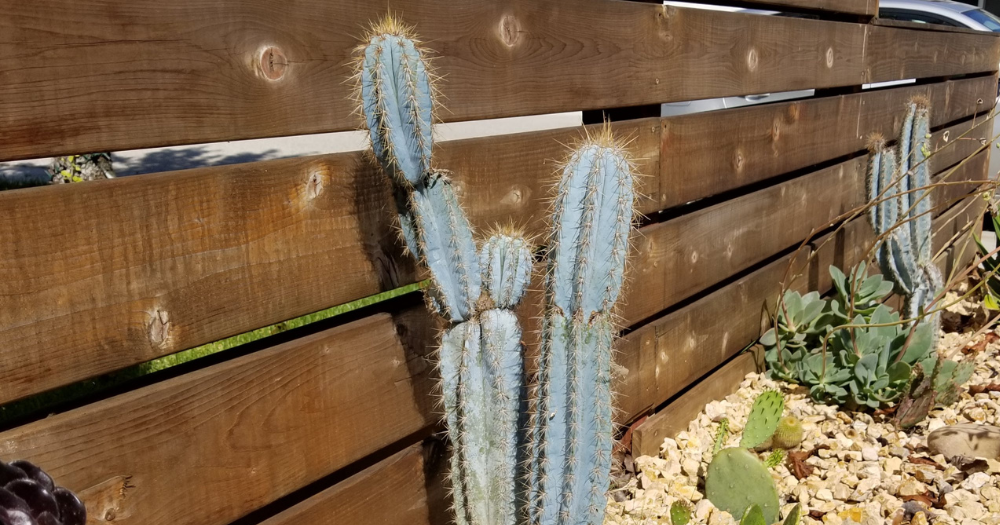
Natural Tendencies
Natural tendencies of some cactus species or aging in long-established plants can contribute to leaning over time.
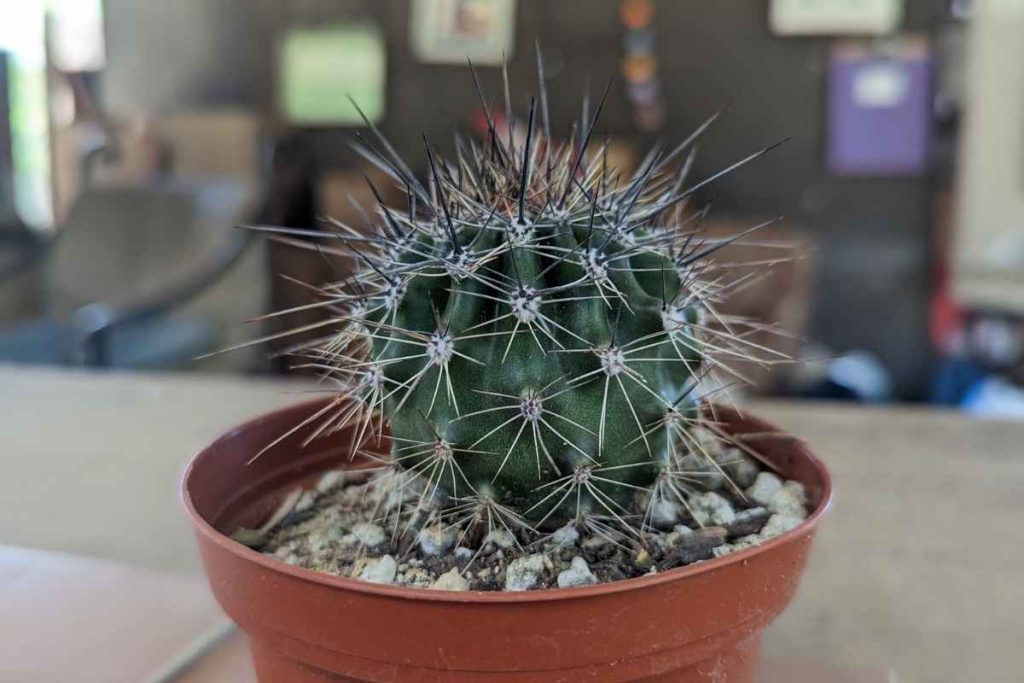
Solution: To stand up a leaning cactus, you will need to take a few steps. First, gently loosen the soil around the base of the cactus with a small garden trowel or spade. Next, use a stake or a piece of bamboo to prop up the leaning cactus in its original position.
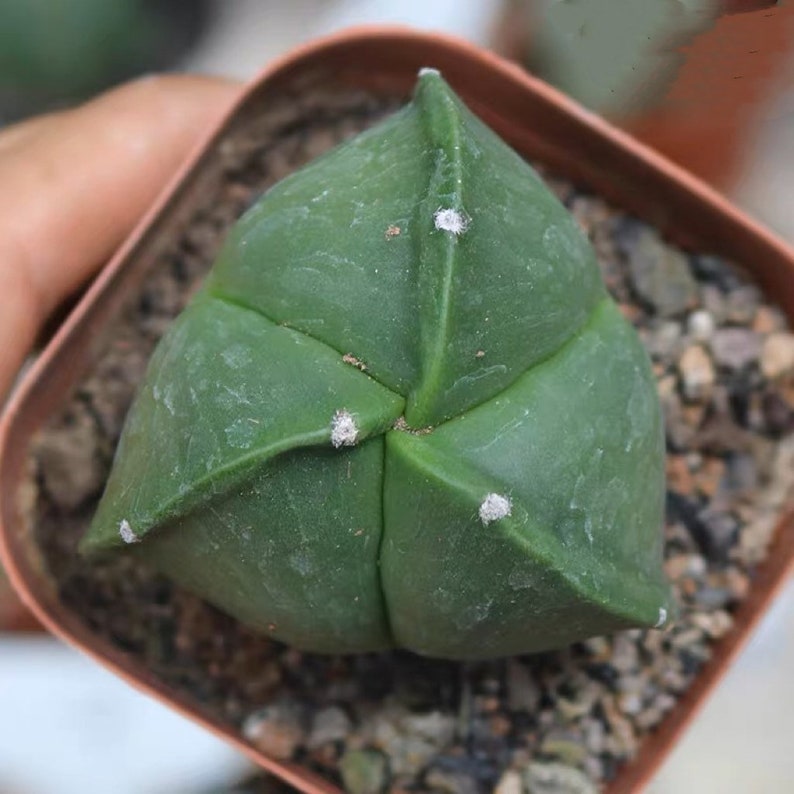
Source: Etsy
Make sure to place the stake or bamboo on the side opposite the direction in which the cactus is leaning. Tie the cactus to the stake or bamboo using a soft, flexible material such as gardening tape or twine. Water the cactus thoroughly and monitor it closely to make sure it stays upright.
You might also like: Rocks On Top of the Soil
How to Straighten a Leaning Cactus
Here are some tips to help straighten a leaning cactus:
Planting and Positioning the Cactus
When planting your cactus, take care to ensure it is centered and upright in the pot. Make sure that your pot is sturdy enough to prevent it from tipping over when your cactus is planted if you feel that the cactus may become top heavy. Gently place the cactus in the pot, making sure it is positioned upright. Then, carefully pack the soil around the base of the cactus to provide stability.
Add a stake or trellis for support
Place a tall stake into the soil near the leaning cactus and loosely tie the cactus to it with stretchable plant ties. This will help hold it straight as it grows.
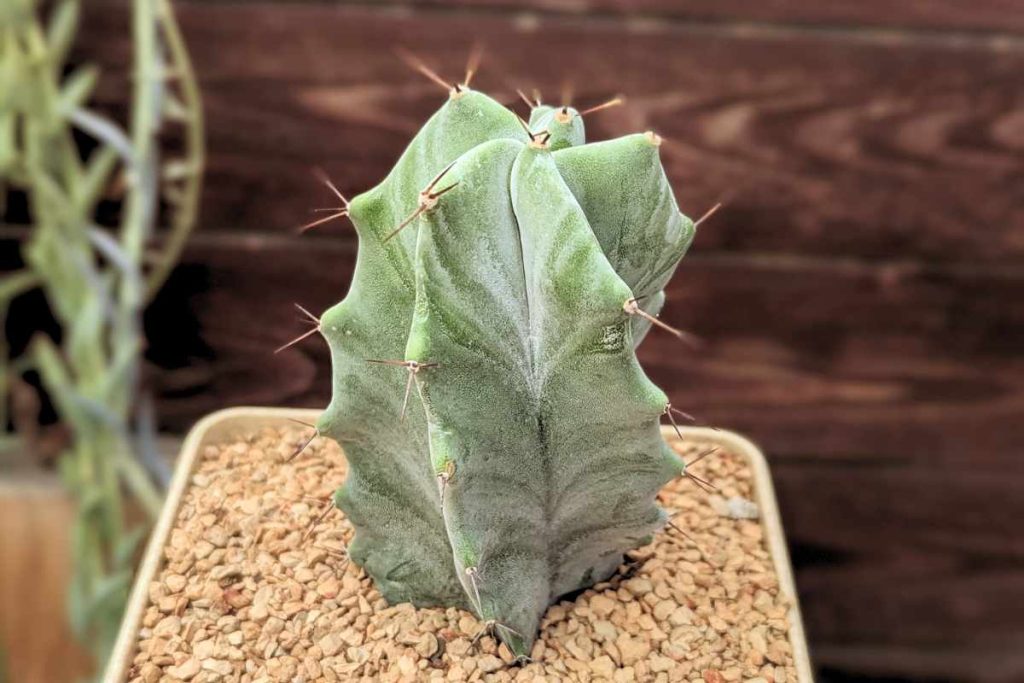
Propagate the top part
If the cactus is leaning severely, you can propagate the top part. Carefully cut the top off and allow the cut end to callus over. Then plant it in soil to root. Meanwhile, the original plant may sprout new growth.
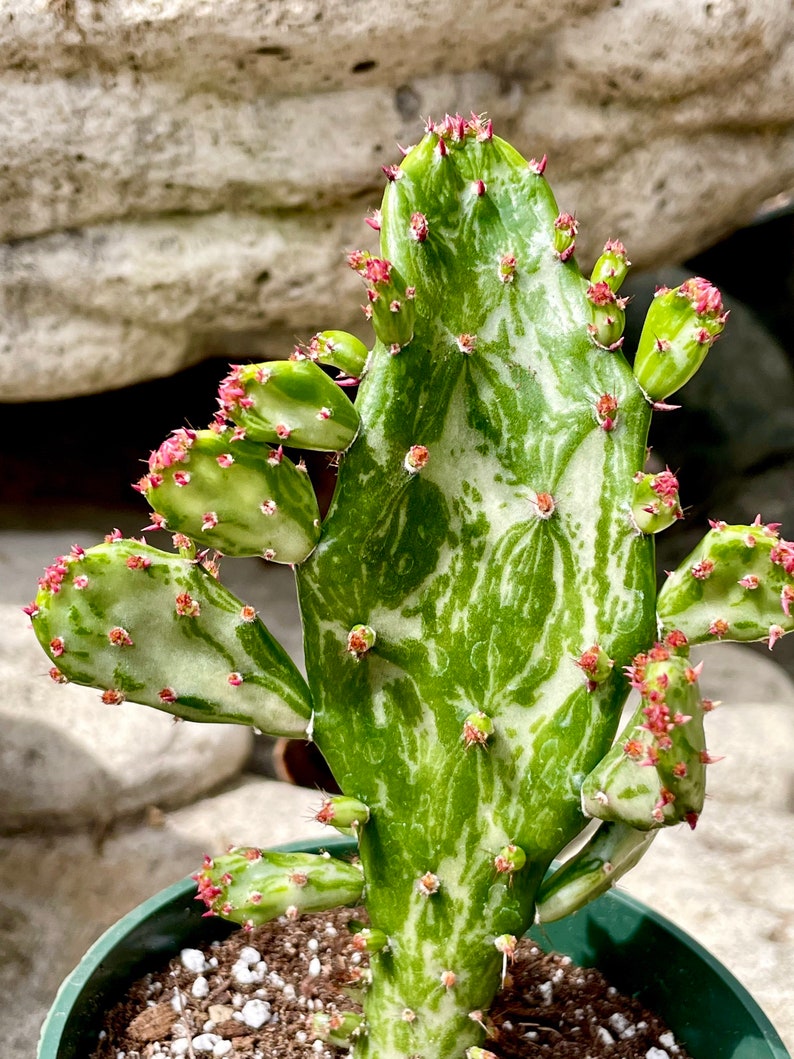
Source: Etsy
Rotate the pot
If the leaning is caused by uneven sunlight, slowly rotate the pot a quarter turn each day to encourage even, upright growth. Make sure not to rotate it too far at once.
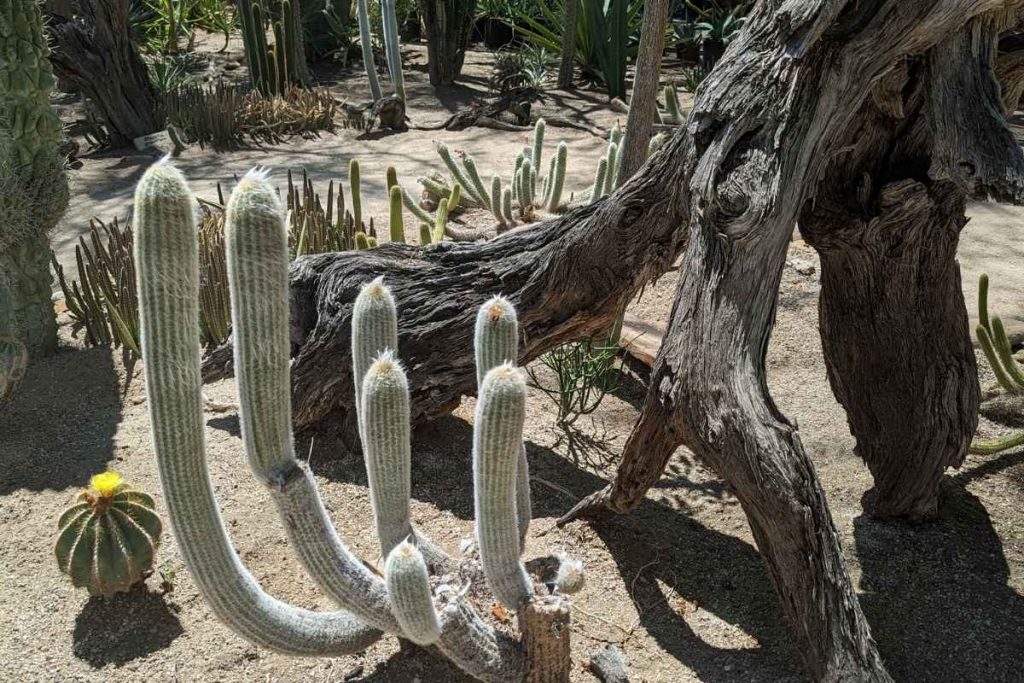
Provide more sunlight
Leanings are often caused by a plant seeking light on one side. Supplement with grow lights to ensure even light exposure. Proper sunlight exposure is vital for a cactus’s growth and posture. Research the specific light requirements of your cactus species and place it in a location that receives sufficient sunlight. Most cacti thrive in bright, indirect light.
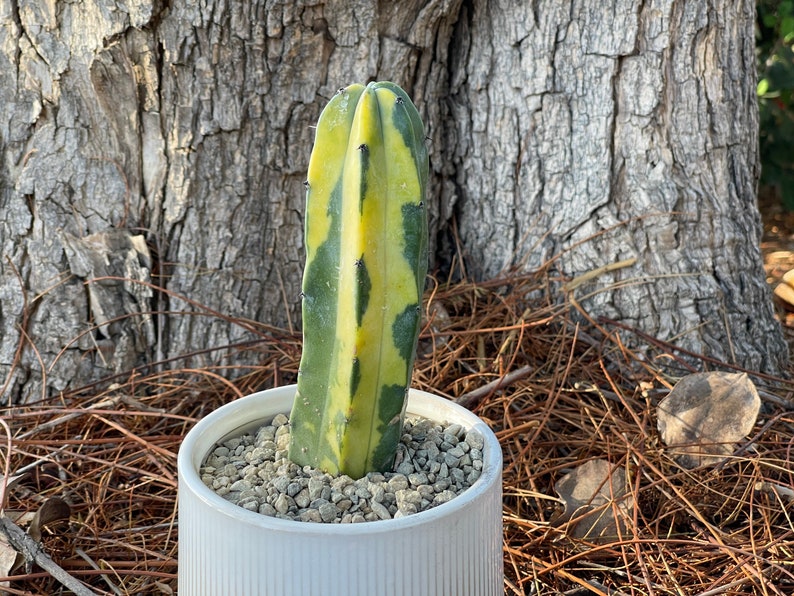
Source: Etsy
Add soil props
Mound more soil on the side that the cactus is leaning away from to encourage it to grow more roots on that side for stability.
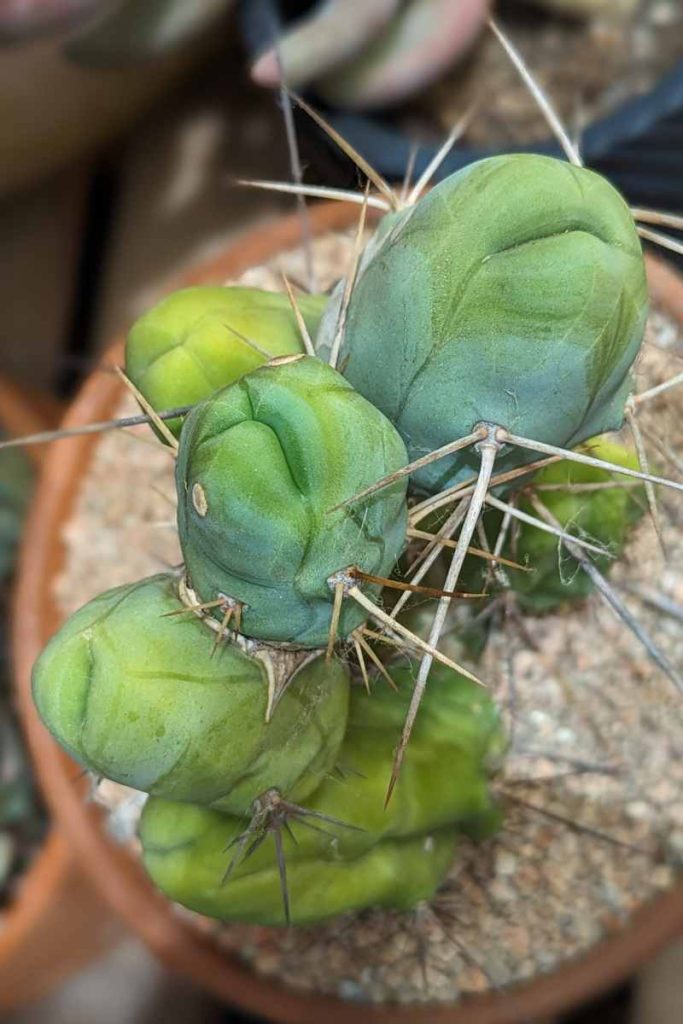
Regular Maintenance and Pruning
Regular maintenance and pruning are essential to keep your cactus upright and healthy. Remove any dead or damaged parts to promote overall plant well-being. If dead or dying parts remain, the rot may travel to otherwise healthy tissue. Additionally, pruning can help maintain a balanced and upright shape. However, exercise caution while handling the cactus to avoid injuries from its spines.
Choosing the Right Time to Repot a Tall Cactus
Before diving into the repotting process, it’s important to choose the right time to ensure the cactus’s success in its new pot. Consider the following factors:
Ideal season for repotting cacti
The best time to repot a tall cactus is during its active growing season, which is typically in the spring or early summer. This is when the cactus can recover more quickly from the stress of being transplanted.
Growth cycle and dormancy period
Some cacti have a dormant period during the winter months. It’s best to avoid repotting during this time, as the cactus may not have enough energy to recover from the transplant. Research the specific cactus species you have to determine its growth cycle and dormancy period.
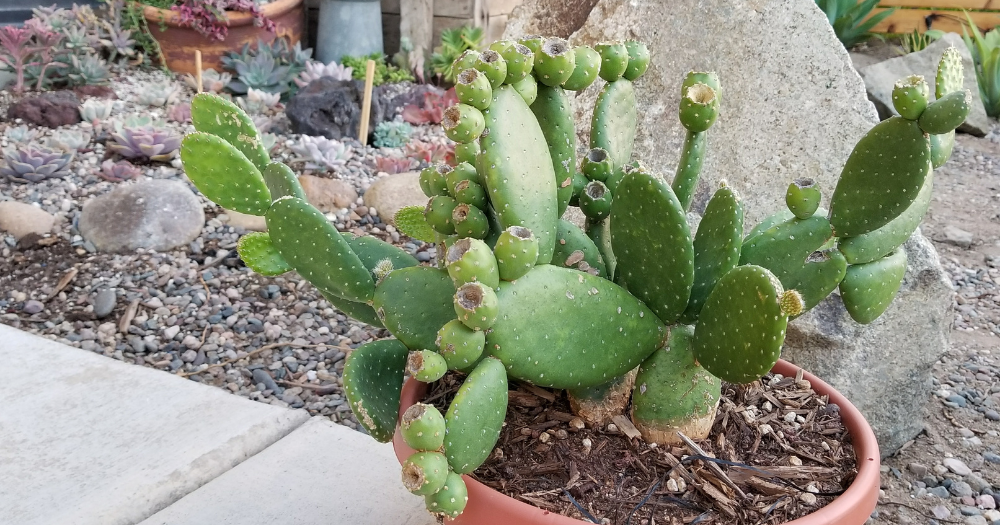
New pot with proper drainage holes
Choose a new pot that is slightly larger than the current pot and has drainage holes at the bottom. This will ensure proper drainage and prevent waterlogged soil, which can lead to root rot.
Soil mix suitable for cacti
Cacti require well-draining soil to prevent water retention. Look for a soil mix specifically formulated for cacti or succulents. These mixes often contain a combination of sand, perlite, and peat moss to provide optimal drainage.
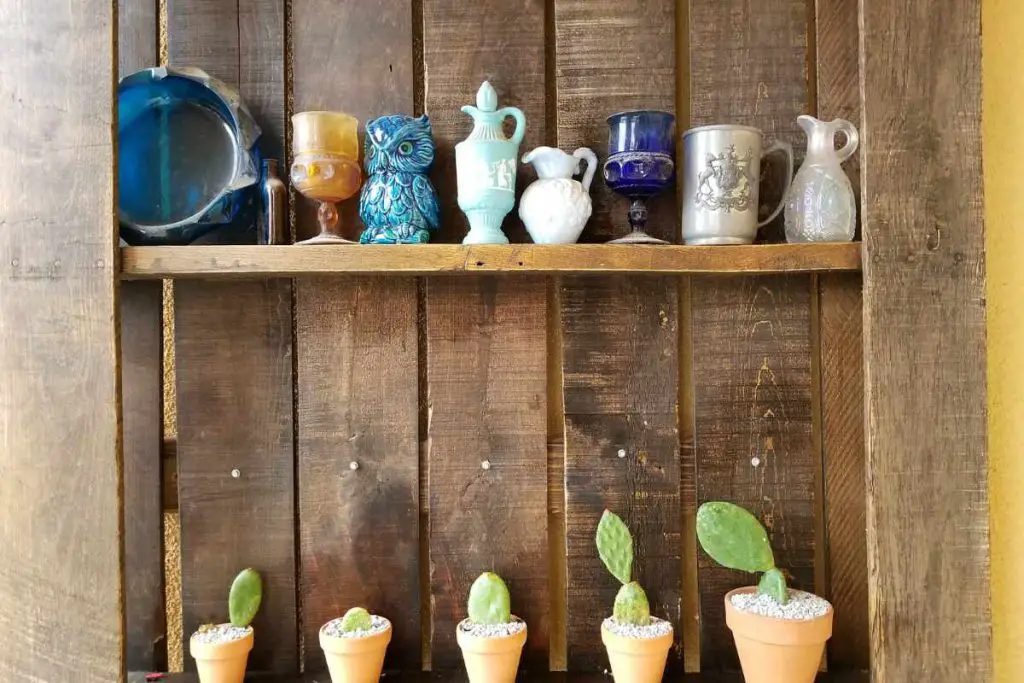
Preparing for Repotting
Proper preparation is key to a successful repotting process. Follow these steps before starting the repotting process:
Water the cactus a few days before repotting
Water the cactus a few days before repotting to ensure the roots are adequately hydrated. This will make it easier to remove the cactus from the old pot without causing damage to the roots.
Hold the cactus near its base and carefully lift it out
Hold the cactus near its base, using a towel or a folded newspaper to protect your hands from the spines. Carefully lift the cactus out of the old pot, ensuring you support the root ball.
Inspect the roots for damage or disease
Take a moment to inspect the roots for any signs of damage or disease. Trim off any rotten or dead roots using clean and sterilized pruning shears.
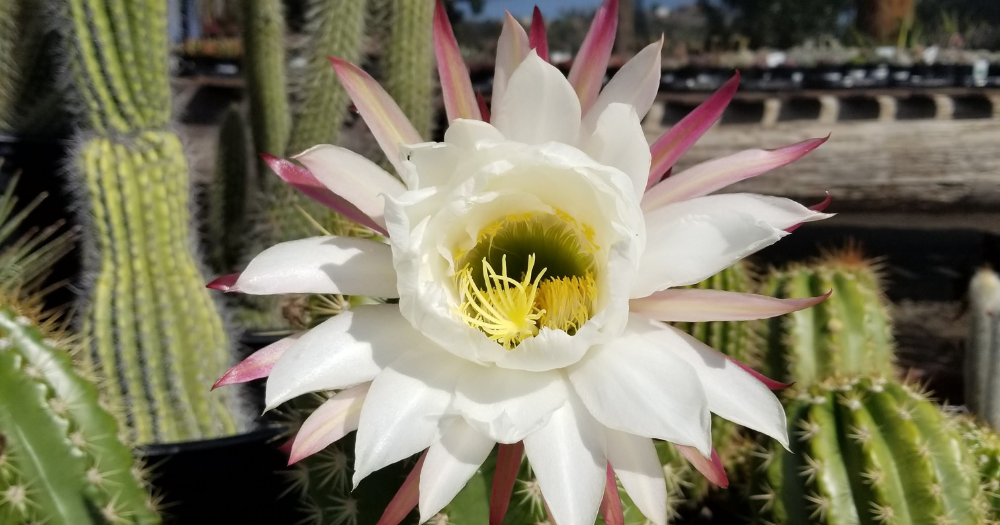
Place the cactus in the center of the pot
Carefully place the cactus in the center of the new pot, ensuring it isn’t leaning one way or the other and at the desired height. Adjust the soil level if needed to ensure the cactus sits securely in the pot.
Fill the remaining space around the cactus with the soil mix, using your hands or a small trowel. Firm the soil gently around the base of the cactus to provide stability.
It’s important not to compact the soil too tightly, as this can hinder water drainage, root growth and can cause the cactus to lean in its pot. The soil should be firm enough to support the cactus but loose enough to allow for airflow.
Leave some space at the top of the pot for watering
Leave some space at the top of the pot to allow for watering without overflowing. This will prevent water from spilling over the edges of the pot and potentially causing damage to the cactus.
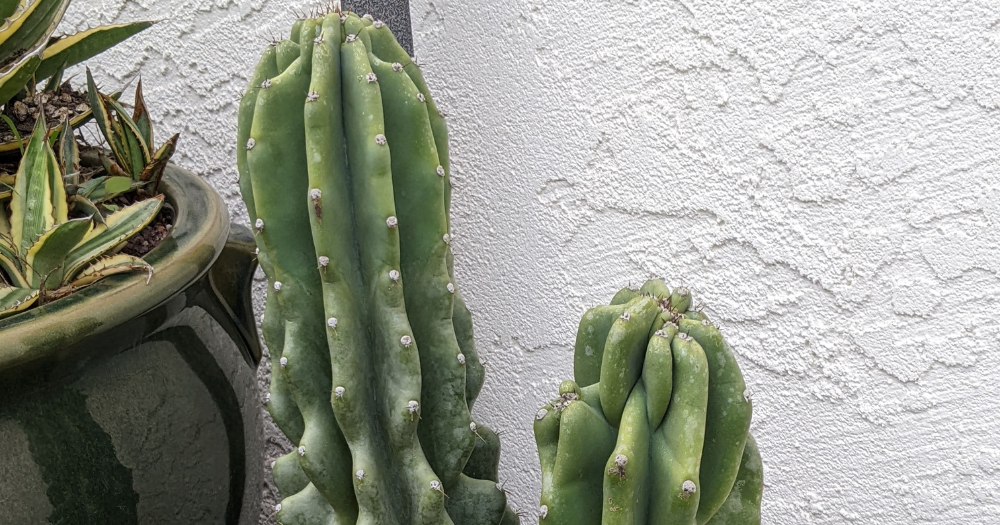
Post-repotting Care
After repotting the cactus, it’s essential to provide proper care to ensure its successful transition. Follow these guidelines:
Allow the cactus to settle for a few days
Give the cactus some time to settle in its new pot before watering or exposing it to direct sunlight. This will allow the roots to adjust and minimize the risk of transplant shock.
Gradually introduce the cactus to sunlight
Once the cactus has settled, gradually introduce it to sunlight. Start with indirect sunlight for a few hours a day, gradually increasing the exposure over the course of a week or two.
Water the cactus sparingly
Water the cactus sparingly after repotting. Allow the soil to dry out between waterings to prevent overwatering, which can lead to root rot. The frequency of watering will depend on factors such as the cactus species, pot size, and environmental conditions.
Avoid fertilization for a few weeks
Avoid fertilizing the cactus for a few weeks after repotting. This allows the cactus to recover from the transplant and reduces the risk of fertilizer burn. Once the cactus has acclimated to its new pot, you can resume regular fertilization according to the specific needs of the plant.
What you can do is mix SuperThrive with your water around the time you’re transplanting your cactus.
When you’re rooting or transplanting your succulents and cacti, use SUPERthrive to help reduce the chance of transplant shock and grow a strong root system.
Most of all, be patient. correcting a leaning cactus takes time. Avoid overcorrecting too quickly. Monitor it and make gradual adjustments as needed. Staking or trellising a leaning cactus provides physical support as roots and tissue heal and strengthen. Being aware of the reasons why cacti lean will help you prevent it in the future.
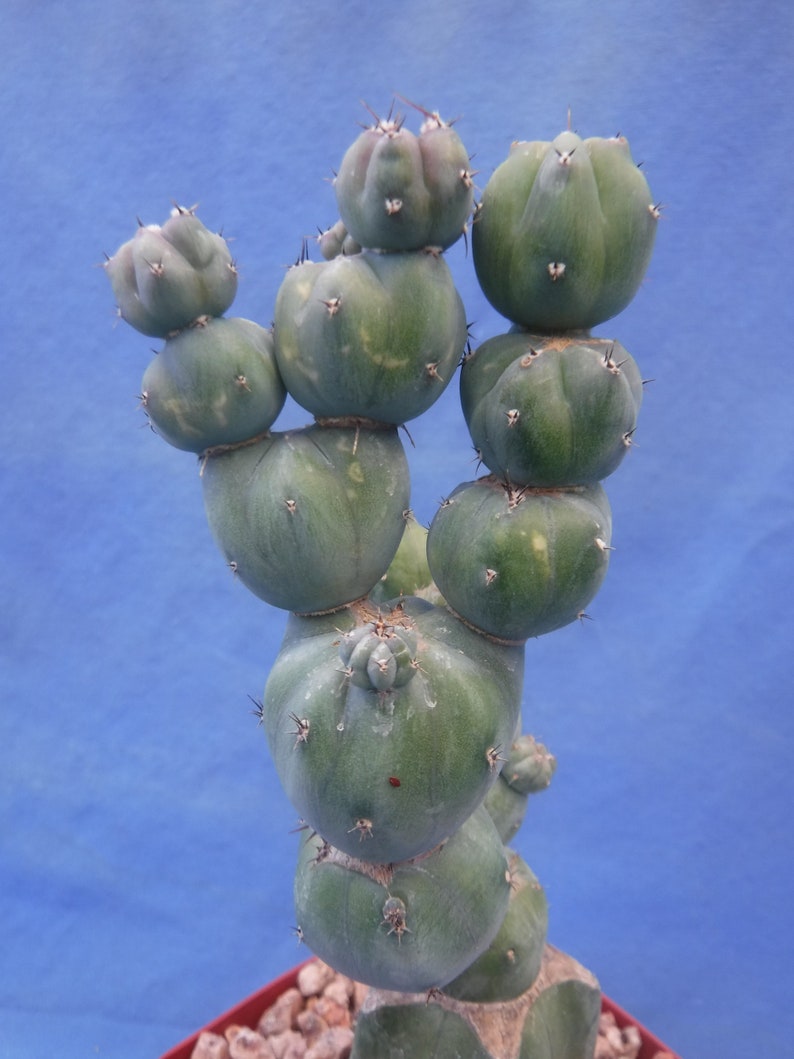
Source: Etsy

